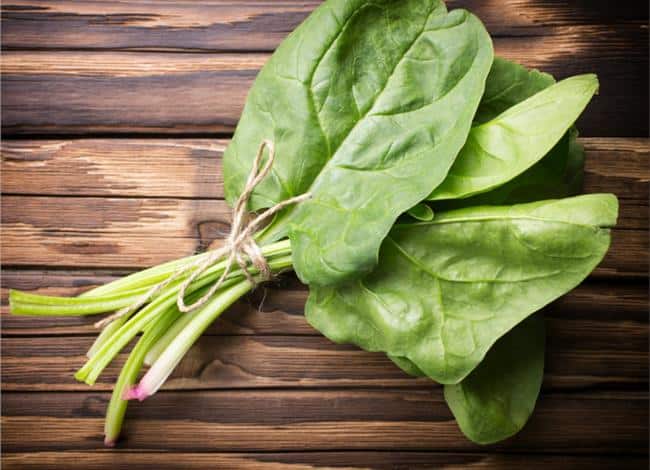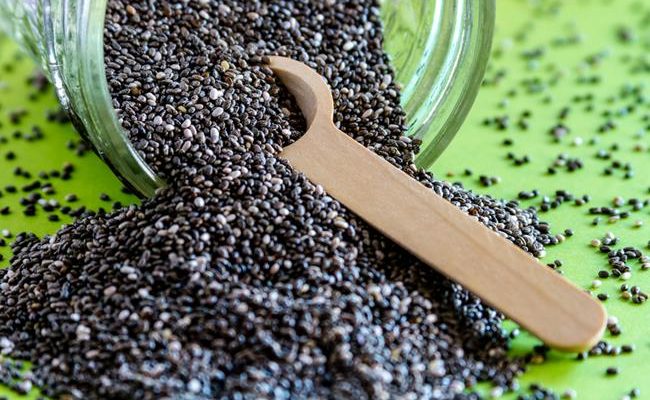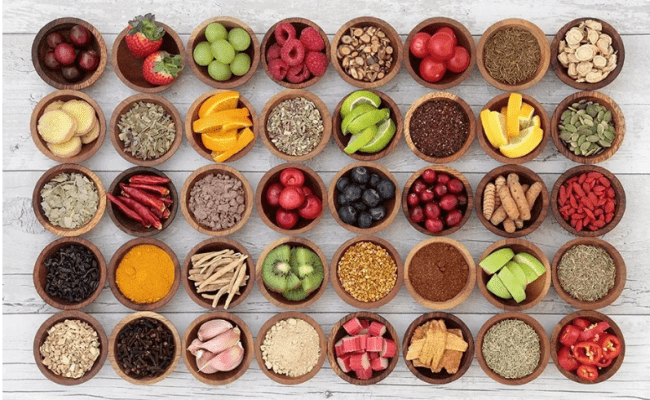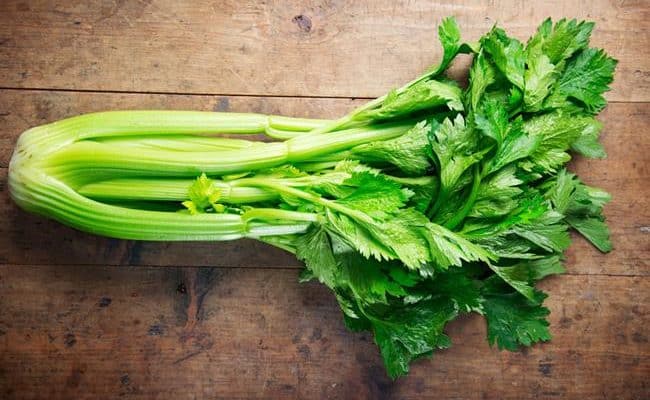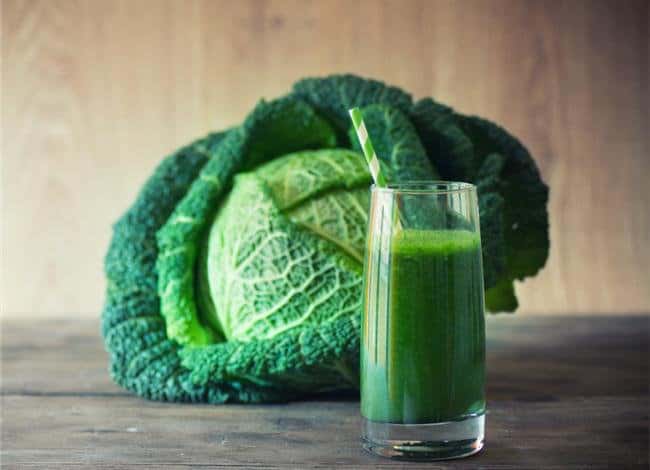
Eating a diet high in fruits and vegetables is associated with many health benefits including: lowering risk for heart disease, stroke, some cancers, some digestive problems and lowering blood pressure. Eating a variety of fruits and vegetables is always recommended to get maximum nutritional benefit. Including a variety of dark, green leafy vegetables as part of your daily vegetable intake is a good idea. Dark greens, like spinach and kale, are a rich source of many vitamins, minerals and antioxidants.
According to the USDA Agricultural Research Service (1), green leafy vegetables may be one of the best cancer preventing foods because they are so high in antioxidants. They can also help build bone strength and help lower risk for inflammatory diseases.
Kale has recently gained in popularity for its nutritional profile. In fact, according to Dr. Drew Ramsey in a TIME article, (2), “2015 is the year to be cool about kale.” While kale does have a lot to offer nutritionally, so do all the other types of leafy greens.
When comparing kale to spinach, kale is higher in some nutrients, but spinach is also higher in other nutrients. Incorporating both into your diet can be the best way to go for the optimal health benefit.
Fiber content
When comparing a serving size of 100 grams each of chopped kale and spinach, their nutritional profile is pretty similar.
A serving of spinach provides about 2.2 grams of fiber, and kale comes in just behind that with closer to 2.0 grams of fiber per serving.
Protein content
Greens are not a significant source of protein, but they do offer a little. Vegans especially who rely on plant only foods could use greens as a source of protein when combined with a variety of other plant foods.
A 100 gram serving of kale provides about 4.3 grams of protein, and spinach comes in slightly lower than that at 2.9 grams pf protein.
Vitamin A
Dark leafy greens are a source of beta carotene (vitamin A), vitamin C, vitamin K, potassium, iron, calcium, B vitamins and magnesium. They are also a rich source of antioxidants.
Spinach and kale offer about the same amount of beta carotene: spinach provides 187% Daily Value (DV) and kale offers 199% DV.
Vitamin A plays an important role for healthy skin, gums and eye health (1). The beta carotene from plants like kale and spinach also help protect body cells from damage from free radicals.
Potassium
Spinach edges out kale slightly for providing potassium. A 100 gram serving of spinach provides about 558 mg of potassium compared to a 100 grams of kale that provides 491 mg of potassium.
Eating the recommended amount of potassium every day is recommended for keeping blood pressure levels at a healthy range.
Less than 2% of American adults get the recommended 4,700 mg intake of daily potassium (2). Eating more leafy greens, whether kale or spinach, can help bump up your potassium intake.
Vitamin C
Vitamin C is an antioxidant and needed for healthy skin, cartilage, bones, gums and wound healing (3).
All fruits and vegetables are a source of vitamin C, so eating a high amount and a variety of fruits and vegetables can provide the daily recommended intake.
One bigger difference between kale and spinach is the vitamin C content. A 100 gram serving of kale provides about 200% DV while spinach provides about 46% DV.
Vitamin K
Vitamin K is needed for proper blood clotting and for bone health. A 2003 study (4) found low dietary vitamin K intake was associated with low bone mineral density in women.
Eating leafy greens provides one of the best dietary sources of vitamin K. Both spinach and kale provide well over 100% DV for vitamin K, but kale does provide more vitamin K than spinach.
The only concern with increasing your intake of spinach or kale dramatically is if you are on certain medications. Changing your vitamin K intake can interfere with blood thinning medications.
Therefore, if you are taking a blood thinner, make sure you speak with your doctor before increasing your dietary vitamin k.
Calcium
Most people associate dairy products as the main dietary calcium source, but leafy greens are also a source of dietary calcium. When dietary calcium intake is low, calcium is released from the bones to maintain blood levels of calcium. Getting enough dietary calcium is important for bone health, nerve function and muscle contraction.
Both spinach and kale contain calcium, but kale provides a little more calcium than spinach. A 100 grams of kale provides about 15% DV, and spinach provides about 9% DV.
Iron and magnesium
Iron and magnesium are two minerals that can be common to not get enough of in the diet. In fact, according to University of Florida IFAS Extension (5), most Americans do not get the recommended intake of magnesium.
Luckily, both spinach and kale provide both iron and magnesium. Spinach provides just a little more than kale for both of these nutrients.
Magnesium is needed for proper muscle and nerve function, healthy bones and protein and DNA synthesis. Iron is necessary for blood formation, and not getting enough dietary iron can lead to anemia.
A serving of kale provides about 8% DV iron and 11% DV magnesium. A serving of spinach provides about 15% DV and 19% DV magnesium.
Iron from plant sources can be harder for the body to absorb. Eating a vitamin C source with a plant iron source can help increase absorption.
Both kale and spinach provide vitamin C along with iron which can help increase absorption. Eating leafy greens with other vitamin C sources may help increase absorption even further.
Conclusion
Both kale and spinach are rich in antioxidants and many vitamins and minerals. Kale has grown in popularity and recognized as a nutrient power house in recent years.
However, when compared with spinach, they are about the same in terms of how much nutrients they provide.
Kale is higher in some nutrients compared to spinach, but spinach is also higher in some nutrients too.
The bottom line is both spinach and kale are healthy. Getting both in the diet can be beneficial, and eating a variety of fruits and vegetables is recommended.
